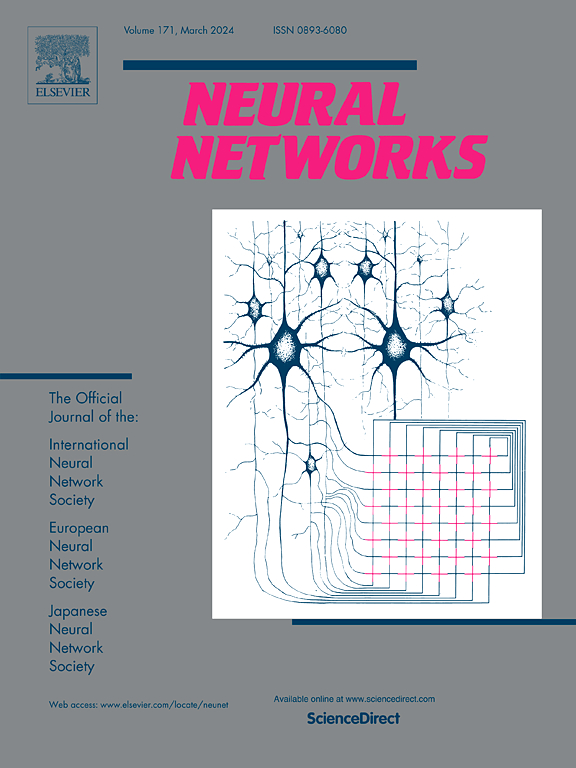用于脑电图分析的图神经网络:阿尔茨海默病和癫痫用例
IF 6
1区 计算机科学
Q1 COMPUTER SCIENCE, ARTIFICIAL INTELLIGENCE
引用次数: 0
摘要
脑电图(EEG)作为一种非侵入性技术被广泛用于诊断包括阿尔茨海默病和癫痫在内的多种脑部疾病。直到最近,疾病一直是由人类专家通过脑电图读数来识别的,这不仅可能是特定的、难以发现的,而且还可能出现人为误差。尽管最近出现了用于解释脑电图的机器学习方法,但大多数方法都无法捕捉到人脑不同区域信号之间潜在的任意非欧几里得关系。在这种情况下,图神经网络(GNN)因其能够有效分析不同类型图结构数据中的复杂关系而备受关注。这其中就包括脑电图,而脑电图是一种尚未被开发的应用案例。在本文中,我们旨在通过介绍一项研究,将 GNN 应用于基于脑电图的阿尔茨海默病检测和两种不同类型癫痫发作的鉴别,从而弥补这一空白。为此,我们展示了 GNN 的价值,表明单一 GNN 架构可以在这两种应用案例中实现最先进的性能。通过设计空间探索和可解释性分析,我们开发了一种基于图的转换器,在阿尔茨海默病和癫痫的三元分类变体用例中,交叉验证准确率分别超过 89% 和 96%,与神经学专家得出的直觉相吻合。我们还论证了脑电图 GNN 的计算效率、通用性和实时运行潜力,将其定位为分类各种神经系统病症的重要工具,为研究和临床实践开辟了新的前景。本文章由计算机程序翻译,如有差异,请以英文原文为准。
Graph neural networks for electroencephalogram analysis: Alzheimer’s disease and epilepsy use cases
Electroencephalography (EEG) is widely used as a non-invasive technique for the diagnosis of several brain disorders, including Alzheimer’s disease and epilepsy. Until recently, diseases have been identified over EEG readings by human experts, which may not only be specific and difficult to find, but are also subject to human error. Despite the recent emergence of machine learning methods for the interpretation of EEGs, most approaches are not capable of capturing the underlying arbitrary non-Euclidean relations between signals in the different regions of the human brain. In this context, Graph Neural Networks (GNNs) have gained attention for their ability to effectively analyze complex relationships within different types of graph-structured data. This includes EEGs, a use case still relatively unexplored. In this paper, we aim to bridge this gap by presenting a study that applies GNNs for the EEG-based detection of Alzheimer’s disease and discrimination of two different types of seizures. To this end, we demonstrate the value of GNNs by showing that a single GNN architecture can achieve state-of-the-art performance in both use cases. Through design space explorations and explainability analysis, we develop a graph-based transformer that achieves cross-validated accuracies over 89% and 96% in the ternary classification variants of Alzheimer’s disease and epilepsy use cases, respectively, matching the intuitions drawn by expert neurologists. We also argue about the computational efficiency, generalizability and potential for real-time operation of GNNs for EEGs, positioning them as a valuable tool for classifying various neurological pathologies and opening up new prospects for research and clinical practice.
求助全文
通过发布文献求助,成功后即可免费获取论文全文。
去求助
来源期刊

Neural Networks
工程技术-计算机:人工智能
CiteScore
13.90
自引率
7.70%
发文量
425
审稿时长
67 days
期刊介绍:
Neural Networks is a platform that aims to foster an international community of scholars and practitioners interested in neural networks, deep learning, and other approaches to artificial intelligence and machine learning. Our journal invites submissions covering various aspects of neural networks research, from computational neuroscience and cognitive modeling to mathematical analyses and engineering applications. By providing a forum for interdisciplinary discussions between biology and technology, we aim to encourage the development of biologically-inspired artificial intelligence.
 求助内容:
求助内容: 应助结果提醒方式:
应助结果提醒方式:


